Content
Nobel prizes 2022
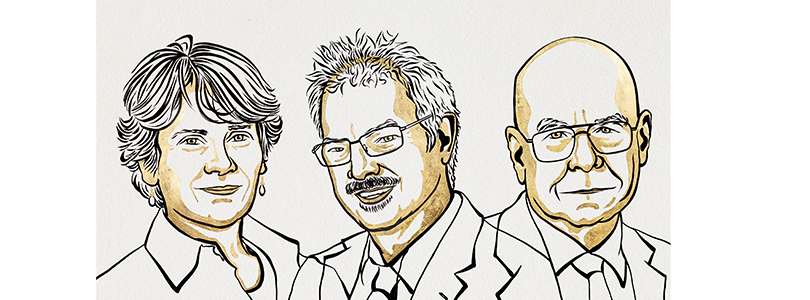
Carolyn Bertozzi, Morten Meldal and Barry Sharpless. Illustration: Niklas Elmehed
The patents behind the prizes
The Nobel Prizes are once again being presented in Stockholm these days. After several recent awards, this year no German can look forward to a prize, but a Swede working in Leipzig can. An American has achieved the feat of winning a Nobel Prize for the second time - only three other scientists and the legendary Marie Curie have managed this so far. Only two women will be honored in 2022. So once again, the committee in Stockholm is doing little for its quota of women: of the nearly 1,000 Nobel Prize winners to date, only 61 have been female.
Austrian Anton Zeilinger is among three scientists sharing this year's Nobel Prize in Physics. In addition to Zeilinger, who teaches at the University of Vienna, John F. Clauser of California and Frenchman Alain Aspect will receive the prize "for experiments with entangled photons that demonstrated the violation of the Bell inequalities and paved the way for quantum information science," according to the Academy's citation. All three have "each performed groundbreaking experiments with entangled quantum states, in which two particles behave as one even when they are separated," the Stockholm statement said. The three researchers thus laid the groundwork for the development of quantum computers and networks and secure encryption of communications.
"New kind of quantum technology in the making"
All three scientists are (co-)authors of numerous patents: Anton Zeilinger received a patent as early as 1980 for a "Method for the detection of inclusions of a crystallographically distinct phase in a sample by transmission with neutrons" ( ![]() AT354776B), ), and most recently he was involved in
AT354776B), ), and most recently he was involved in ![]() WO002021013990A1 (1,12 MB).
WO002021013990A1 (1,12 MB).
John Clauser filed, among others, "Rotation, acceleration, and gravity sensors using quantum mechanical matter-wave interferometry with neutral atoms and molecules" ( ![]() US4992656A (2,93 MB)). Most recently, he was awarded the patent for "Ultrahigh resolution interferometric x-ray imaging" (
US4992656A (2,93 MB)). Most recently, he was awarded the patent for "Ultrahigh resolution interferometric x-ray imaging" ( ![]() US5812629A (7,1 MB)). Alain Aspect's patents include "Electromagnetic device for cold atom generation" (
US5812629A (7,1 MB)). Alain Aspect's patents include "Electromagnetic device for cold atom generation" ( ![]() DE60113171T2).
DE60113171T2).
"It is becoming increasingly clear that a new kind of quantum technology is emerging. We can see that the laureates' work with entangled states is of great importance, even beyond the fundamental questions about the interpretation of quantum mechanics," said Anders Irbäck of the Nobel Committee.
A new scientific discipline
Svante Pääbo has almost single-handedly created a new scientific discipline: palaeogenetics. The Swede receives the Nobel Prize for Medicine "for his discoveries about the genomes of extinct hominids and human evolution". The Leipzig resident decoded the DNA of the Neanderthals. The Nobel Committee praises his "groundbreaking research": "By revealing genetic differences that distinguish all living humans from extinct hominids," says Stockholm, "his discoveries form the basis for research into what makes us humans so unique."
Pääbo became world-famous as a doctoral student in 1984 when he succeeded in proving that DNA can survive in ancient Egyptian mummies. His father Sune Bergström had already received the Nobel Prize for Medicine in 1982. Pääbo, who previously held a professorship in Munich, has been director of the Institute for Evolutionary Anthropology at the Max Planck Society in Leipzig since 1997, which can thus boast its 30th Nobel Prize winner altogether (if you include its predecessor institution, the Kaiser Wilhelm Society).
Pääbo repeatedly patented his methods for research on DNA, for example as "Method for the direct, exponential amplification and sequencing of DNA molecules and its application" ( ![]() E69713866T2 (1,58 MB)) or as "Method for the direct, exponential amplification and sequencing of DNA molecules and its application" (
E69713866T2 (1,58 MB)) or as "Method for the direct, exponential amplification and sequencing of DNA molecules and its application" ( ![]() US020040197811A1).
US020040197811A1).
Two-time award winner Sharpless
Barry Sharpless now belongs to perhaps the most exclusive "club" in the world: that of two-time Nobel laureates. Only Marie Curie, Linus Pauling, John Bardeen and Frederick Sanger have managed this feat so far. Sharpless had already been awarded the prize for chemistry in 2001. In 2022, the Californian scientist will be awarded the prize again.
He shares the prize with Carolyn Bertozzi from Stanford University and Morten Meldal from the University of Copenhagen. "Sharpless and Meldal have laid the foundation for a functional form of chemistry - click chemistry - in which molecular building blocks can be assembled quickly and efficiently," the Academy said. "Bertozzi has taken click chemistry to a new dimension and begun to apply it in living organisms." Click chemistry is used in the development of drugs and the creation of genetic maps, among other things, he said.
All three laureates are involved in hundreds of patents: Carolyn Bertozzi, for example, on "Aldehyde tags, use therof in site-specific protein modification" ( ![]() US8097701B2 (5,55 MB)), Barry Sharpless most recently on "Sulfur (VI) fluorides compounds and methods for the preparation thereof" (
US8097701B2 (5,55 MB)), Barry Sharpless most recently on "Sulfur (VI) fluorides compounds and methods for the preparation thereof" ( ![]() US020220313624A1 (6,39 MB)). Morten Meldal's work was reflected in "Tunable probes for selective protein labelling and enzyme inhibition" (
US020220313624A1 (6,39 MB)). Morten Meldal's work was reflected in "Tunable probes for selective protein labelling and enzyme inhibition" ( ![]() WO2018/234483Al (5,58 MB)), among others.
WO2018/234483Al (5,58 MB)), among others.
Human rights organisations honoured
This year's Nobel Peace Prize goes to human rights activist Ales Bialiatski of Belarus, the Russian human rights organisation Memorial and the Ukrainian Center for Civil Liberties.
Bialiatski has been in prison for over a year. Human rights activist Irina Scherbakowa is a co-founder of Memorial and holds a visiting professorship at the University of Jena. Memorial is the oldest and most important human rights organisation in Russia. After the award was announced, a Russian court ordered the de facto closure of Memorial's Moscow office. The Center for Civil Liberties draws attention to human rights violations and is currently particularly committed to the release of Ukrainian prisoners of war.
Roots and constraints
The 2022 Nobel Prize in Literature goes to French author Annie Ernaux "for the courage and clinical acuity with which she uncovers the roots, alienations and collective constraints of personal memory".
In her work, Ernaux consistently examines, from a variety of perspectives, lives marked by stark inequalities of gender, language and class, the Academy said.
Prize for financial crisis managers
This year's economics laureates are Ben Bernanke, former Fed chairman, Douglas Diamond and Philip Dybvig. "They have greatly improved our understanding of the role of banks in the economy, especially during financial crises. An important insight from their research is why avoiding bank failures is so important," the citation reads.
Pictures: Niklas Elmehed - Nobel Prize Outreach, DPMAregister
Last updated: 19 May 2025

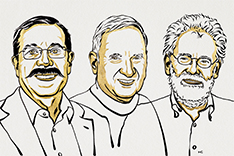
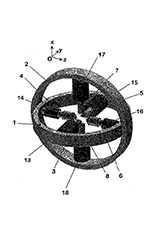
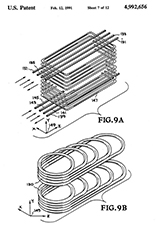
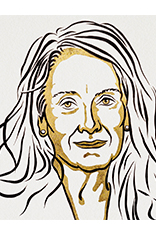
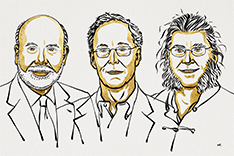
Not only protecting innovations
Social Media